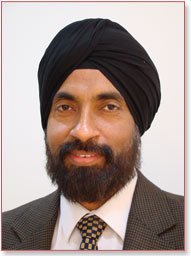 We often stress on the need to improve the quality of education, but as our expectations from the
We often stress on the need to improve the quality of education, but as our expectations from the
younger generation grows higher, so does the burden on their tender shoulders. And it’s not the mental burden to excel in class, but also the physical pain of carrying the heavy burden to school which has lead to the regular increase in complains on back aches from the school children. “Definitely, heavy weight of school backpack can cause problems related to chronic back aches, muscles and neck pain, and slouched posture too. Largely, because the children’s bones are soft up to the age of 18. Also their spine is not too strong, therefore, the burden of carrying weight on their tender shoulders is reflective on their walking and sitting posture which is why they tend to walk with bent shoulders most of the time.
“Also, in some cases, depending on their stamina, children feel fatigued and tired as it requires a lot of energy to lift their backpack till their respective classrooms. It surely, affects their concentration in class. Also, carrying backpacks over one shoulder is a wrong practise as it will make muscles strain to compensate for the uneven weight. The spine leans to the opposite side, stressing the middle back, ribs, and lower back more on one side than the other and this muscle imbalance can cause muscle strain, muscle spasm, and back pain.
A heavy backpack can pull on the neck muscles, contributing to headache, shoulder pain, lower back pain, and neck and arm pain. “A lot of times parents come to us complaining about their child’s wrong posture. Though we can’t do much about their heavy school bags, We advice parents to encourage their children to carry their schoolbags using both shoulders. And to take care of their child’s nutritional needs which is very important for the growing children.
Doctors emphasise that the current education system should bring in changes in order to bring ease for children. They suggest a compulsory physical education period which will enable children to be fit and flexible. “Apart from taking care of their nutrition like proteins, vitamin D, calcium, etc, we suggest children should participate in physical activity and should be encouraged to play outdoor games as this will help them strengthen their muscles and increase their stamina too.
As part of finding solution to the problem, one of the possible ways to tackle the situation is to adopt the Tamil Nadu tri-semester pattern, in which the academic year is divided into three terms and the books are suitably divided into three parts, thereby making the bags lighter. This will significantly reduce the load on the students, giving them adequate time to complete their lessons. Also, merging subjects is a great way to make things easier for school children. “I think another way to tackle the problem is by providing lockers to each of them so that they can leave a few of their books behind in their safe. I don’t know how feasible it is but if school authorities can provide facilities like this it would be great for children.
Look for the following backpack design features that help reduce the chance of back pain:
The material of the backpack should be light. For example canvas should be opted as opposed to leather.
Padded and wide (2-inches), adjustable shoulder straps on the backpack are must.
Padded back should be preferred.
Hip strap, waist belt, or frame to redistribute the weight of the backpack will be more useful.
Wheels so that the backpack can be pulled rather than carried would be an added advantage.
Tips to educate your child how to properly load and wear the backpack to avoid back pain:
Always use both shoulder straps and wear the backpack on the back rather than over one shoulder.
Pack heaviest objects into the backpack first so they are carried lower and closest to the body.
Fill compartments so that the load is evenly distributed throughout the backpack.
Adjust the straps to fit the backpack snugly to the child’s body, holding the bottom of the backpack 2 inches above the waist.
Do not carry the backpack low near the buttocks.
Do not lean forward when walking; if this is necessary, there is too much weight in the backpack.
